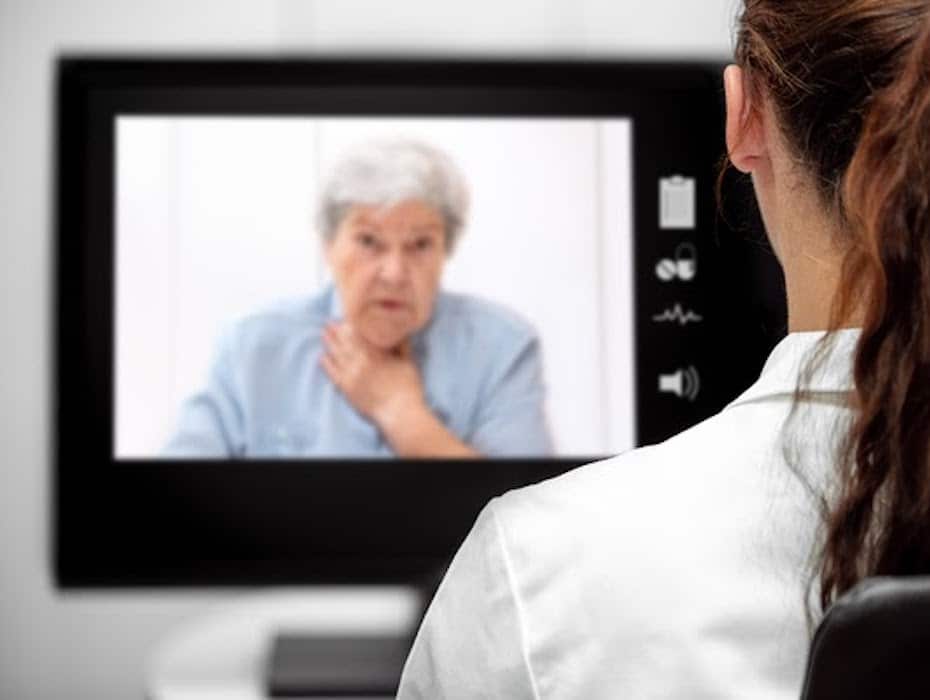Telehealth services make the delivery of healthcare more convenient, more cost-effective, and more efficient for everyone involved. However, you’ll only reap these benefits if you choose the right technology to deliver telehealth services.
The right telehealth services technology enables a clear flow of communication between providers and patients, allows for provider collaboration, and is secure, flexible, and cost-effective. Learn more about the RingCentral healthcare communications platform; sign up for free now.
Telehealth services: An overview
“Telehealth services” refer to electronic information and telecommunications technologies to support long-distance clinical health care, patient and professional health-related education, public health, and health administration.
They’re not the same as telemedicine, which specifically refers to the delivery of remote clinical services, although telehealth services can encompass telemedicine. Telehealth services technology can include video conferencing, telephony, streaming media, and wired and wireless communication.
Choosing your telehealth services technology
There are two fundamental factors to keep in mind when choosing telehealth services technology:
- Your goals
- The telehealth services you’ll deliver
What are your goals?
The right telehealth services technology will depend on what your goals are.
Do you want to boost revenue at your practice? Do you want to schedule patients more efficiently? Think carefully about what you want to achieve and which features will help you do it.
What kind of telehealth services will you deliver?
Choose a platform that best supports your needs. However, how do you know what your needs are? Your needs will depend on the type of telehealth services you’re offering.
For example, dermatologists need to perform visual examinations of patients’ skin to assess potential problems; they would be best served by a healthcare communications platform that had built-in video conferencing. Mental health practitioners also benefit from being able to see their clients face-to-face, yet whatever solution they choose must support telephony in addition to video conferencing. If you want to offer a patient care access center, you’ll need a solution with omnichannel client routing as well as telephony and video conferencing.

Essential features to consider
There are some features that are universal, regardless of the telehealth services that you’ll be delivering. Any healthcare communications platform you choose for telehealth services should:
Enable a clear flow of communication between providers and patients:
When you invest in a solution for telehealth services, you want the flow of communication between you and your patients to be clear and seamless.
It should be easy to contact a healthcare provider; the aforementioned patient access center lets patients ask questions or share information with their providers outside of an appointment. Additionally, the right telehealth services solution allows patients omnichannel access, meaning patients can call, text, or email to request an appointment so the practice can schedule them faster.
Allow for seamless provider collaboration:
Sometimes, it takes a team of healthcare providers to help a patient get better. In such cases, a patient’s health will only improve if the team members are collaborating effectively. If a patient goes into the hospital for knee surgery, the patient’s primary care physician needs to know when the patient goes into rehab and what kind of exercises he’ll be doing to help him recover.
The right healthcare communications platform enables members of a care team to coordinate effectively. It features, among other things, video conferencing features so that team members can hold meetings to share information about a patient’s treatment plan.
Be secure:
There are two reasons security matters to telehealth services: healthcare providers are bound by regulations to protect patient information, and patients want to feel safe during virtual appointments. When choosing a healthcare communications platform, select one with high levels of built-in security.
The right healthcare communications platform will be HITRUST certified, with multiple layers of data and physical security (including encryption between endpoints). It will also provide HIPAA Business Associate Agreements for covered entities, which ensure that organizations doing business with a healthcare provider are using personal healthcare information appropriately.
Be flexible and scalable as your telehealth service offering expand:
Flexibility is crucial when choosing a healthcare communications platform. Your healthcare communications platform should accommodate your workflows as well as the way your patients want to communicate.
The aforementioned patient access center is a good example; it allows patients omnichannel access to communicate with providers. Another example of flexibility is dynamic call routing. Dynamic call routing allows you to forward incoming calls from specific numbers to any phone number in the world. With dynamic call routing, you can choose who answers which line, and what happens to a call after hours.
Be cost-effective:
“Cost-effective” doesn’t just refer to the price tag in comparison to other telehealth services technology. It means that the healthcare communications platform has features that will save you money in the long run.
One costly problem healthcare providers face is that of no-shows; people who don’t show up to appointments cost the healthcare industry $150 billion per year. A healthcare communications platform that incorporates automated SMS notifications 24 hours before an appointment saves providers money.
The problem of no-shows has a deeper impact than lost revenue. No-shows also make it difficult for providers to create accurate schedules and utilize their staff members efficiently. To compensate for no-shows, staffers tend to overbook appointments, which hurts patients who show up on time for their appointments as well as potential patients who could be taking up those unused spots. A healthcare communications platform with automated reminders increases appointment attendance, so every provider at a practice sees as many patients as possible.
RingCentral: Helping you offer telehealth services
Telehealth services give you a competitive advantage over other healthcare providers. The right healthcare communications platform makes it easy for you to offer telehealth services to your patients in a way that’s simple, effective, and secure. See how cloud communications can transform your healthcare organization. Request a demo.
Originally published Jul 14, 2020, updated Mar 17, 2021





